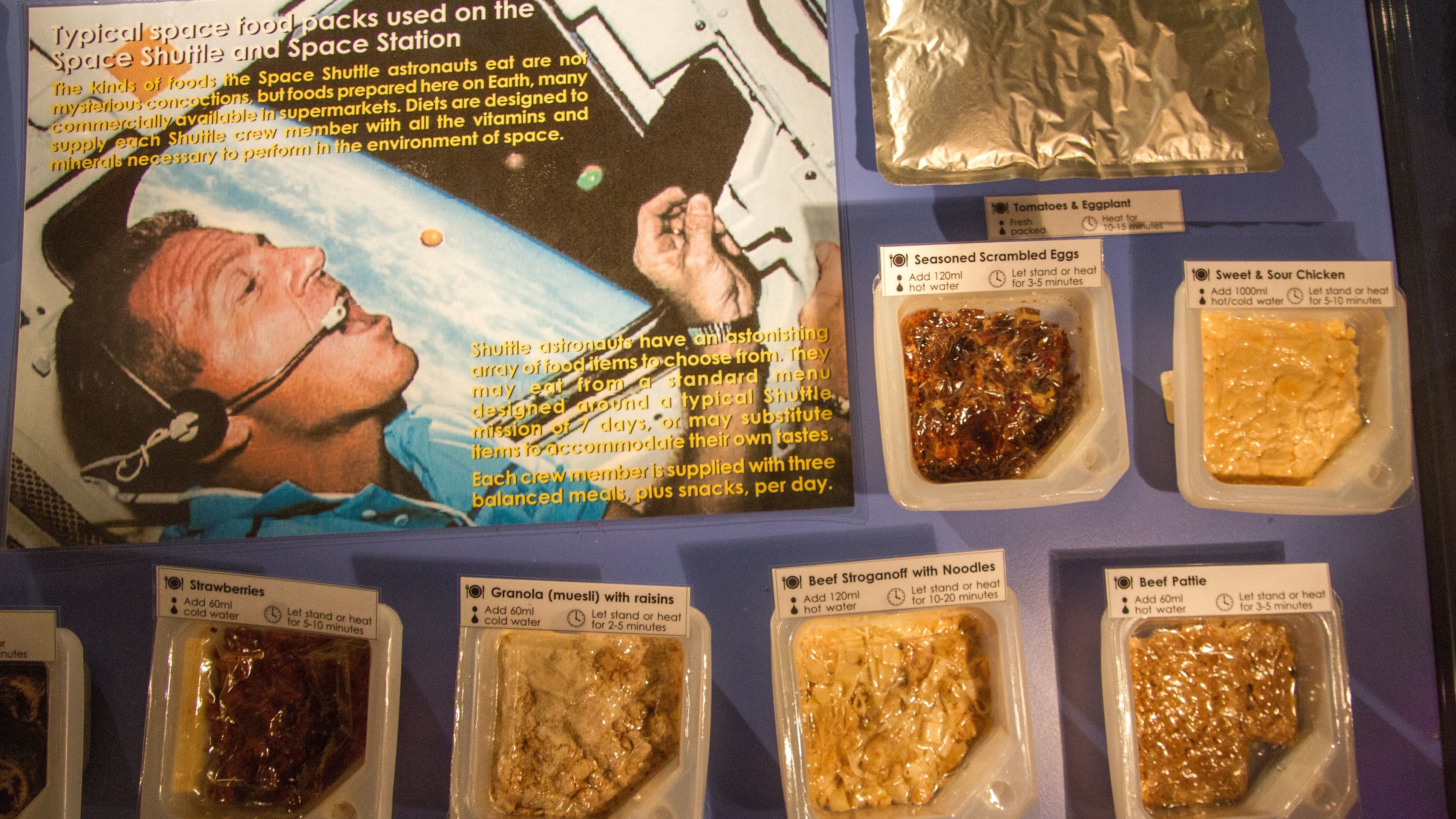
Space food.
Sky-dining may sound fun and fancy, but cooking a good meal without a functional kitchen, limited supplies and scant resources makes most airline meals passable. As passengers, we must eat to survive the few hours of flight and hope to indulge in our favourite cuisine once we land. But what about astronauts, who often spend days, if not months, cramped inside spaceships thousands of miles away?
Since humans burn more calories in space, they need high-calorie food packed with micronutrients like calcium and Vitamin D, which keep bones healthy under microgravity.
For decades, space agencies across the world have grappled with the challenge of dishing out a power-packed meal for their astronauts that’s light to carry, easy to prepare, needs little or no water, can be stored at room temperature, leaves no mess in the absence of gravity, is safe and tasty. That’s a lot of boxes to check, making designing a space menu taxing.
In the initial days of space missions, mashed-up vegetables and meats in tubes made it to the spaceships. Then came canned foods and dried pellets. In the Apollo moon mission, astronauts carried dehydrated eggs, bacon, cornflakes, tuna salad and beef sandwiches—a significant shift from the bland pellets.
As food processing technologies improved with freeze-drying and thermostabilisation, dried fruits, nuts, granola bars and jerkies made it to the list. Today’s space menu can rival a restaurant’s with a spread of sushis, samosas, biryani, tortillas and salads. Soon, astronauts might savour chicken korma, shahi paneer, dal-chawal, aloo paratha, chapatis and khichdi onboard India’s Gaganyaan.
Using hydroponics, space agencies have also experimented with growing fresh produce, such as lettuce and tomato, in space, which humans can eat while jetting off to Mars and other far-off destinations.
Recently, scientists put together a ‘perfect’ space salad high in calories, easy to prepare, tasty and nutritious. Astronauts can whip up this vegetarian salad with soybeans, poppy seeds, barley, kale, peanuts, sweet potato and sunflower seeds, some of which can be grown in space.